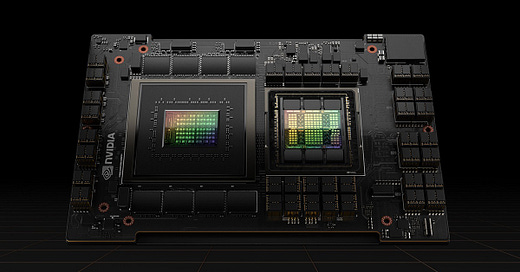NVIDIA’s Grace Hopper Superchip
This superchip is built to handle memory-intensive tasks like training learning models, making it a key player in advancing industries like healthcare and finance.
Hey friends,
Let’s chat about NVIDIA and its rollercoaster stock ride over the past month—because, wow, has it been a wild one!
Image Credit: Nvidia.com
So, first off, in late August 2024, NVIDIA announced it had hit a record-breaking $30 billion in revenue for Q2, growing by a jaw-dropping 122% compared to last year. That’s insane! You’d think their stock would be soaring, right? Well, not exactly...
NVIDIA's stock started falling partly because Amazon Web Services (AWS) decided to hold off on buying the Hopper chips, opting to wait for the newer Blackwell processors instead. (Blackwell is another generation of NVIDIA’s GPUs). This created worries about a potential dip in demand for NVIDIA’s current chips, which likely shook investor confidence and contributed to the stock drop.
NVIDIA released the Grace Hopper Superchip on August 8, 2023, before the stock rose. Then, NVIDIA's stock surged significantly due to the strong demand for AI technologies and the graphics processing unit (GPU).
Let’s talk about its key features.
The Grace Hopper Superchip is NVIDIA’s latest and greatest creation, designed to handle the tough jobs in artificial intelligence (AI).
This powerhouse combines two key parts: the Grace CPU (the part that handles general tasks) and the Hopper GPU (the part that does graphics and AI work). By having these two work super closely together, this chip can process information crazy fast.
The CPU has 72 ARM Neoverse cores (a fancy way of saying it’s good at crunching big data), and the Superchip is loaded with HBM3e memory, its short-term memory. This memory can transfer data at 10 terabytes per second. (That's fast. Like 50% faster than what came before.)
There’s also NVLink-C2C. This highway lets the CPU and GPU talk to each other in real-time, with no delays. It makes the chip even quicker and reduces lag.
This super chip isn’t just powerful, it’s also built to be energy-efficient. So, while doing all this incredible AI work, it’s not guzzling electricity.
That’s all for this week. Hope you learned something new!
Keep learning,
Suhana.




